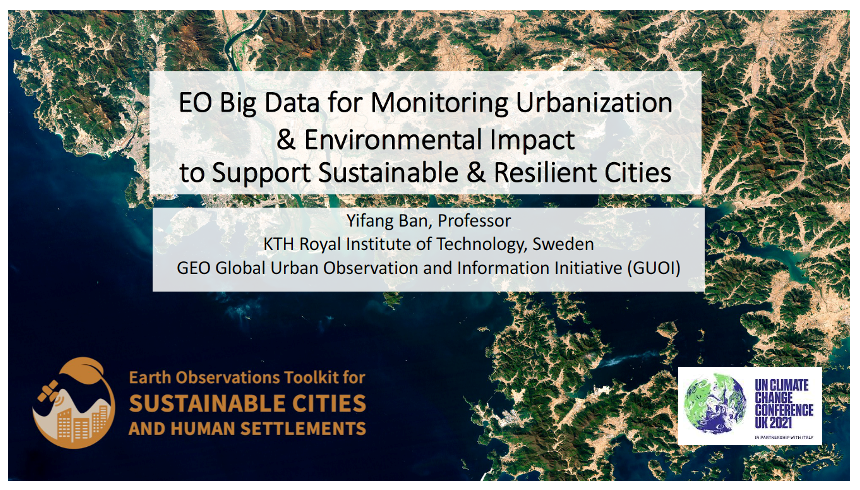KTH Professor speaker at UN COP26 side event - Earth observations to build climate resilient cities

Yifang Ban was one of the speakers at yesterday's UN COP26 side event about Earth Observations to build sustainable and climate resilient cities. The event brought together governments, the private sector, academia, funders, and practitioners working in the areas of human settlements, sustainability, and climate resilience.
Cities around the world face numerous environmental hazards—such as extreme heat events, landslides, pollution, and flooding— that they must monitor and address to reduce risks to, enhance resilience of, their residents to climate change impacts. Earth observations allow cities and other types of human settlements to be monitored and understood in comprehensive ways and deliver up-to-date insights to decision makers.
The hybrid event shared how the The Earth Observations Toolkit for Sustainable Cities and Human Settlements can be used to measure and analyze Sustainable Development Goal indicators and climate change - related risks and vulnerabilities for cities and other human settlements.
Yifang Ban spoke about EO Big Data for Monitoring Urbanization & Environmental Impact to Support Sustainable & Resilient Cities. This research is funded by the Swedish National Space Agency and Digital Futures.

